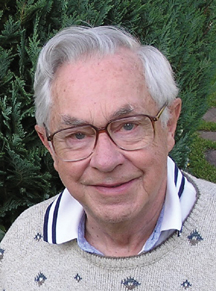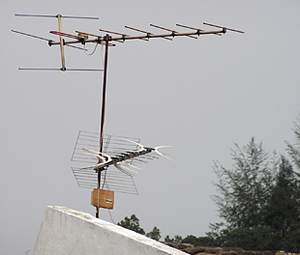Interference From Television Band Devices

My previous column was about Television Band Devices, the new name for "White Space Devices," which will start sharing broadcast spectrum with broadcasters. That sharing will now commence June 13, 2009 assuming the end of analog transmission is not postponed again.
There two kinds of TVBD: Fixed (location) and Personal/Portable devices. Fixed TVBD will be permitted to radiate up to 4 watts (average power) from an antenna at a height above ground up to 20 meters. Personal/portable devices are limited to 40 mW EIRP when operating on a channel adjacent to a DTV channel or 100 mW when operating on other vacant channels, but there is no limitation of the height above ground for these, as the FCC believes they will generally be quite near ground. That seems reasonable in residential neighborhoods of one and two story homes, but what about city dwellers in large apartment houses and offices in tall buildings with lots of windows to radiate through?
CO-CHANNEL INTERFERENCE
All TVBD are prohibited from using a locally allotted TV channel in or near a community having a DTV allotment on that channel. The FCC has defined how close to, but outside of the predicted noise-limited perimeter of a station, a DTVB can be operated on the same channel as a DTV station in that community. At the noise-limited perimeter of a station's coverage area the desired DTV signal field strength is 41–20 Log 615/channel mid-frequency (MHz) in dB above 1 microvolt/meter (UHF), or 36 dB uV/m in the high VHF band, 28 dB uV/m in the low VHF band.
At 615 MHz, the field strength at this perimeter will provide –84 dBm of DTV signal power to a receiver connected to a receiving antenna/downlead per the FCC model described in FCC/OET Bulletin No. 69. As everyone knows, –84 dBm power to the receiver is 15 dB above the receiver generated noise. At the noise-limited perimeter, no co-channel interference can be tolerated. Accordingly, the FCC has established a 23 dB SNR where the desired signal is 16 dB above the receiver generated noise. So the field strength of an undesired DTV signal at this perimeter must be 18 dB uV/m, or less, (41 dB uV/m – 23 dB). This should also apply to TVBD signals which the FCC says probably act in a similar manner to undesired DTV signals. (I don't agree, as this is tantamount to saying that all modulation schemes are more or less equal in terms of causing interference. They aren't. COFDM signals require a higher SNR than do 8-VSB, which is why COFDM was not chosen by the Advanced Television Systems Committee in the United States. Furthermore, most interference is due to receiver nonlinearity and that is related to the peak signal voltage, not its average power. The peak-to-average power ratio of COFDM signals is greater than for 8-VSB signals, by several dB.)

DTV rooftop antenna As the desired signal power is –84 dBm, the undesired (TVBD) signal power should not exceed –107 dBm (–84 dBm – 23 dB) to protect DTV reception at the noise-limited perimeter. A 40 mW EIRP signal from a transmitter 1 mile distant would have a field strength of 56.7 dB uV/m. A simple dipole (DTV) rooftop antenna would capture –74.1 dBm of interference. The FCC DTV model (10 dB forward gain, 14 dB front-to-back ratio, and 4 dB downlead loss), would deliver –82.1 dBm of undesired TVBD signal power to the receiver. This is 25 dB too much interference. At 2 miles, 19 dB too much. At 4 miles, 13 dB too much, and at 8 miles, 7 dB too much. At 16 miles, Bingo!
So any TVBD radiating 40 mW 16 miles outside the perimeter could cause co-channel interference.
ADJACENT CHANNEL INTERFERENCE
Fixed devices are also prohibited from operating on channels adjacent to a local DTV channel, but this prohibition is in place because testing to date has failed to demonstrate that DTV signals and those from wireless microphones can be reliably and accurately detected at the FCC required levels. As there are few, if any, vacant channels in the high VHF and UHF bands not adjacent to a DTV channel in major markets, I expect that further work on such detection means will result in a decision by the FCC to drop this prohibition on the use of first adjacent channels by fixed TVBD. Personal/portable TVBD will be permitted to use adjacent channels effective June 13, but they are currently limited to 40 mW or less radiated power.
A fixed TVBD radiating 4 watts EIRP in either adjacent channel (N–1 or N+1) would cause out-of-band noise to appear in channel N. This noise is required to be at least 55 dB below the TVBD signal power. At 1 mile from the TVBD transmitter, the field strength of this 4 watt signal is 76.7 dB uV/m. This would produce a signal power at a dipole antenna 1 mile away of –54.1 dBm (76.7 dB uV/m – 130.8 dB). A 10 dB DTV antenna gain would increase this to –44.1 dBm, but the line loss to the receiver would lower it to –48.1 dBm. This is the power of the TVBD signal on channel N+/–1. The noise in channel N from this TVBD would be –99.1 dBm (–44.1 dBm – 55 dBm). Incidentally, this added noise from the TVBD is equal to the receiver-generated noise power. To bring this down to –107 dBm where it would have negligible effect, the distance would have to increase to more than 2 miles. This is why the FCC should not allow fixed TVBD to operate on first adjacent channels.
For a personal/portable TVBD, 40 mW of power would still cause interference when the transmitter is 660 feet from the receiver, assuming there is a line-of-sight path.
I believe that TVBD could not make use of channels adjacent to a DTV channel because of the sideband splatter in these channels from the DTV transmitter. Many UHF DTV transmitters radiate up to 1,000 kW (30 dB above 1 kW) and that the sideband splatter into each adjacent channel is 35.5 watts (44.5 dB below 30 dBK or – 14.5 dBK). This is almost 10 times the radiated power of any fixed TVBD. Furthermore, DTV transmitting antennas are typically at 1,000 feet above ground from which a direct line-of-sight path would exist to many receiving sites. Both of these factors make the D/U ratio for the TVBD very bad indeed for the TVBD.
OUT-OF-CHANNEL EMISSIONS
The FCC requires that the maximum field strength radiated by a TVBD in a channel offset by two or more channels from its channel of operation to conform with the specifications in Part 15.209 of its current rules. In the high VHF band the limit is 150 mV/meter, and in the UHF band: 200 mV/meter measured at a distance of 3 meters with an instrument having an equivalent noise bandwidth of 120 kHz. In other words, the measuring instrument slices the channel into 50 slices each of 120 KHz bandwidth slices and can measure each slice, one at a time. Obviously, the field strength indicated should be multiplied by 50 to get the field strength across an entire channel. This is just like using a spectrum analyzer. If its resolution bandwidth is 100 kHz, then it indicates a signal power 10 Log 50, 17 dB below the power in a 6 MHz channel. One must add this correction factor unless the spectrum analyzer does this automatically for you. There may be some confusion over the appropriate measurement bandwidth, as the CISPR document says 120 kHz. But it doesn't state whether this is the –3 dB bandwidth or the equivalent noise bandwidth of their filter.
For example, take the UHF situation: 20 Log 200 dB uV/m = 46 dBuV/m (measured) + 17 correction factor = 63 dB uV/m field strength at 3 meters. If the TVBD is operating on channel 38 we can calculate the power available from a resonant dipole antenna (zero dBd gain) by adding the Dipole Factor of –130.8 to get –67.8 dBm of noise power into a dipole. The FCC assumes the use of a directional, rooftop DTV, antenna gain = 10 dBd for UHF signals and a 4 dB loss in the downlead so the receiver "sees" –61.8 dBm of noise in channel 36 or channel 40 due to a TVBD operating on channel 38.
One might argue that the DTV receiver has RF selectivity, but at UHF, the selectivity against a signal on a second adjacent channel (N+/–2) is quite small as the FCC Labs reported in FCC/OET 07-TR-1003, March 2007.
So the noise power in channel N from a TVBD on channel N+/–2 (or higher) in the desired channel N is –62 dBm. Oops! Well, after all, this if the extreme case where the path is only 10 feet (3 meters). But, as shown above this noise power decreases very slowly with distance.
The noise power should be reduced from –62 dBm to around –107 dBm or by 45 dB so we need a minimum distance between antennas of about 1,500 feet. But again, there could be more than one TVBD, one on channel N+2 and another on N–2. So perhaps we really need more clearance from the DTV antenna—maybe no more than one TVBD per block, or one per apartment house. But can the use of any unlicensed device be rationed?
Please note that I assumed these TVBD do not overload the DTV receiver. That is unrealistic at 50 feet or 100 feet or perhaps 200 feet, but the receiver doesn't need to be overloaded to suffer jamming by this 100 mW TVBD or his big brother, a 4,000 mW fixed TVBD, which your neighbor may install.
Unless I have misinterpreted the FCC rules, all TVBD are required to follow the FCC Part 15.209 limit on out-of-band emissions even though they can operate at different powers.
What about a stringent protection ratios to protect our national GPS service? Broadcasters have to protect GPS, why not TVBD? Consider that someday these devices will number in the tens of millions as is foreseen for wireless connection to the Internet and between data processing "gadgets." What about the noise level at the GPS satellite in space when it sees all of these tens of millions of TVBD signals? Their combined signals will look like Gaussian noise which is, I believe, the ideal jamming signal.
OK, this discussion shows that there will be interference from TVBD of all sorts into DTV receiving appliances: receivers and downconverters. But what can be done about it? The owner of the TVBD is presumably operating it in accordance with FCC rules and it is legal for him to have purchased it, so it is also legal for him to use it, even if it causes some annoyance to others. He isn't causing harmful interference because, by definition, his equipment is being operated in accordance with the FCC rules so he can't be causing "harmful" interference. Whatever problems there are may be blamed on the receiver manufacturer or the local broadcaster. The good news is that this interference will not appear suddenly, it will creep in as more and more TVBD go into operation. The bad news is that by then the "Genie is Out of the bottle" and Genies seldom return to their bottles.
I want to thank my colleague, Linley Gumm, another retired Tektronix engineer for his help both in improving my RF test bed and with calculations needed for this column on many occasions. Stan Knight, also a reader of this column and who designed tuners prior to retirement has given me a lot of help and encouragement.
Stay tuned.
Charlie Rhodes is a consultant in the field of television broadcast technologies and planning. He can be reached via e-mail atcwr@bootit.com.
The professional video industry's #1 source for news, trends and product and tech information. Sign up below.
